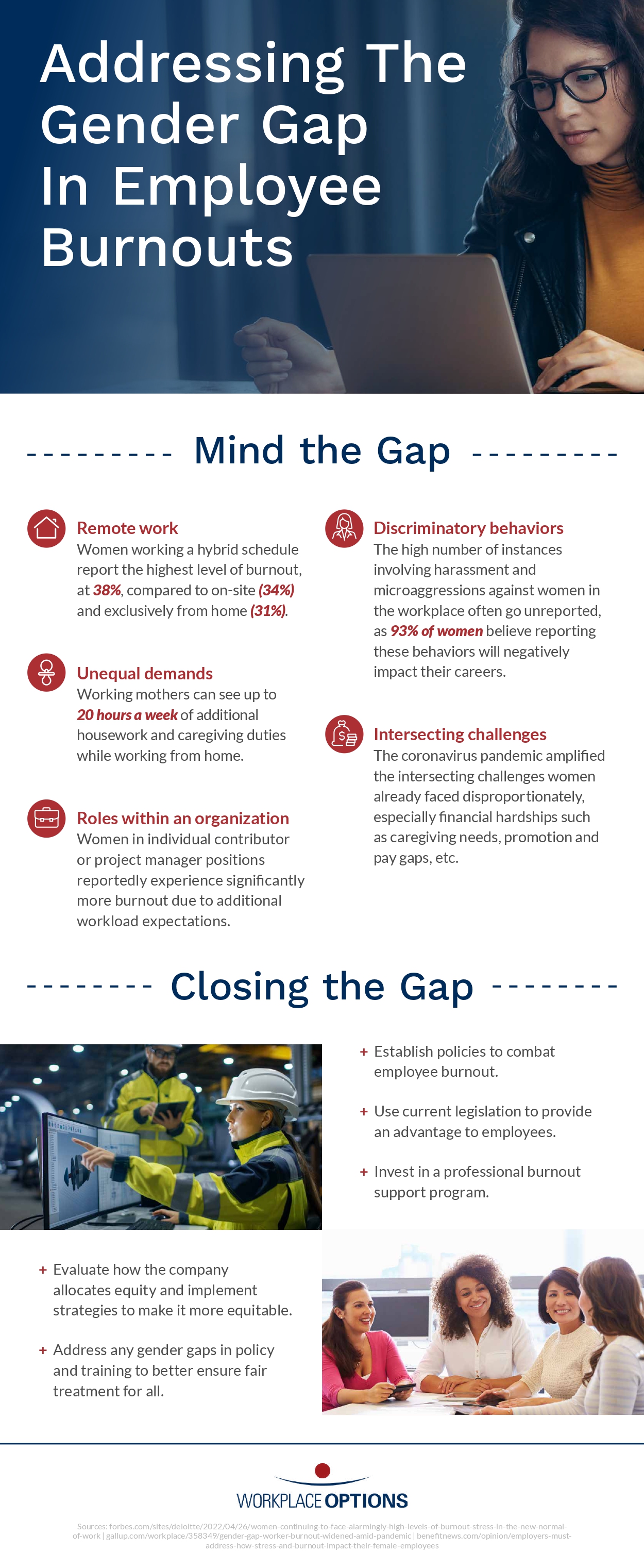In the intricate dance of professional life, the issue of burnout is a persistent challenge that affects employees across industries. However, within this broader conversation, there exists a nuanced aspect that demands our attention: the gender gap in employee burnouts. The experience of burnout, though universal, can manifest differently for men and women, pointing to systemic issues that need careful examination and targeted solutions.
Burnout, characterized by chronic workplace stress that has not been successfully managed, affects individuals regardless of gender. However, the factors contributing to burnout often differ. Women, in many cases, face the additional burden of navigating workplace inequalities, including wage gaps, limited opportunities for advancement, and societal expectations regarding caregiving responsibilities. The intersection of gender with these challenges can create a unique set of stressors for female employees.
One significant contributor to the gender gap in burnouts is the unequal distribution of caregiving responsibilities. Women often find themselves juggling demanding careers with the lion’s share of responsibilities at home, whether it be childcare or caring for elderly family members. This dual burden can lead to increased stress levels, impacting both professional and personal well-being.
Motherhood, while a joyous and fulfilling aspect of life, can, unfortunately, be a contributing factor to the gender gap in burnouts. The “motherhood penalty” refers to the disadvantages mothers face in the workplace, including biased perceptions of commitment, limited opportunities for career advancement, and the struggle to achieve work-life balance. These challenges can significantly contribute to burnout among women in the workforce.
To tackle the gender gap in burnouts, it is imperative to address the root causes embedded in workplace inequities. This involves fostering a culture that values diversity, equity, and inclusion. Companies should critically assess policies related to promotions, flexible work arrangements, and parental leave to ensure they are designed to support all employees, irrespective of gender.
Offering flexible work arrangements can be a powerful strategy in mitigating the gender gap in burnouts. Flexible schedules, remote work options, and compressed workweeks provide employees, especially women, with the flexibility they need to balance professional and personal responsibilities. By embracing flexibility, employers acknowledge the diverse needs of their workforce and contribute to a more inclusive and supportive work environment.
Mentorship and sponsorship programs can play a pivotal role in bridging the gender gap in burnouts. Establishing formal mentorship initiatives that connect employees with experienced mentors can provide invaluable support and guidance. Additionally, sponsorship programs, where senior leaders actively advocate for the career advancement of women, can help break down barriers and create more equitable opportunities.
Shifting the narrative from work-life balance to work-life integration is crucial in addressing burnout. Recognizing that personal and professional lives are interconnected, employers can promote an environment where employees feel empowered to integrate their work and personal responsibilities seamlessly. This approach reduces the pressure to compartmentalize and fosters a healthier, more sustainable way of living.
Encouraging open communication about mental health and providing robust support systems is vital. Employers can create a culture that destigmatizes conversations around mental health and offers resources such as counseling services or employee assistance programs. A supportive workplace that prioritizes mental well-being contributes to reducing burnout and creating a more inclusive environment.
Achieving gender pay equity and equal opportunities for career advancement is fundamental in addressing burnout. When women perceive that their contributions are valued and rewarded equitably, it fosters a sense of professional fulfillment and reduces the stress associated with workplace disparities.
Addressing the gender gap in burnouts requires a multifaceted approach that acknowledges the unique challenges faced by women in the workforce. By dismantling systemic barriers, fostering inclusivity, and promoting work environments that prioritize employee well-being, organizations can contribute to a more equitable and sustainable professional landscape for all. The journey toward gender equality in the workplace is not only a moral imperative but also a strategic investment in the overall health and success of businesses. Check out the infographic below to learn more.
Infographic provided by Workplace Options, experts on corporate wellbeing solutions






